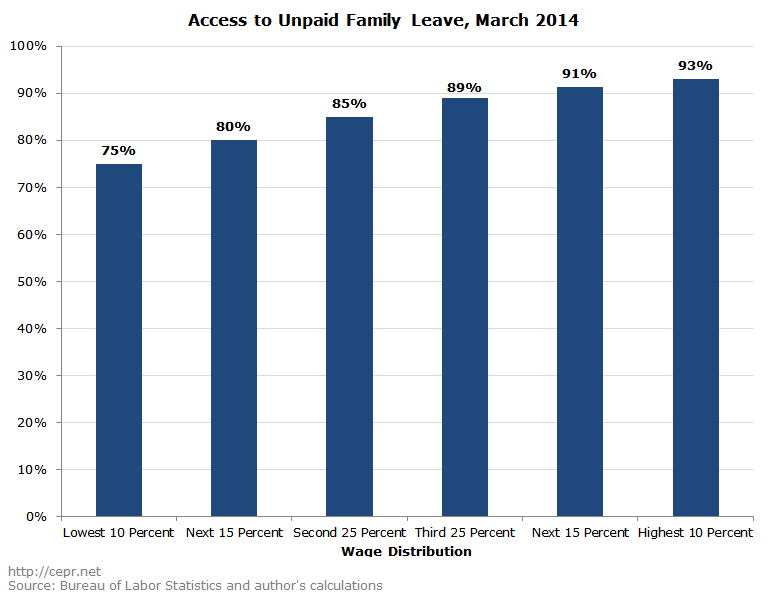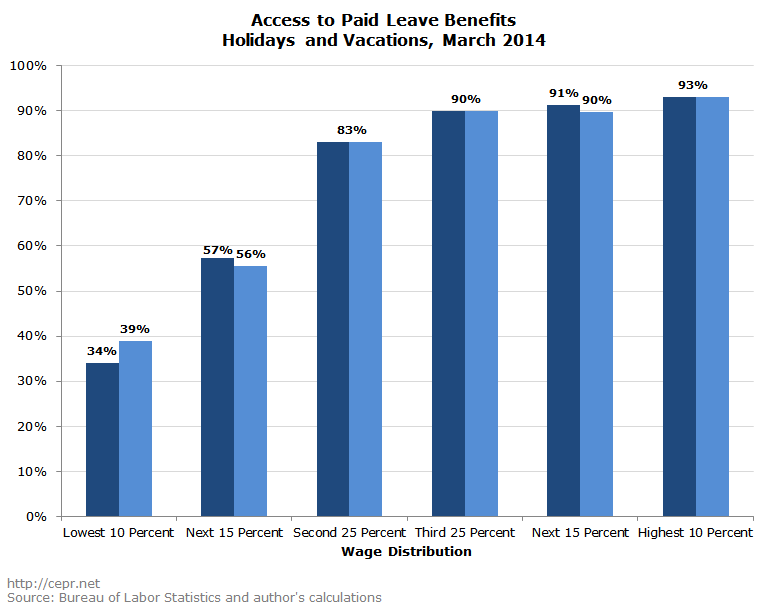December 16, 2015
Earlier this year, the Bureau of Labor Statistics (BLS) released a short report on wage inequality in the U.S. It gave detailed breakdowns of earnings by gender, age, education, state of residence, industry, and occupation.
The report also included data on access to leave benefits along the wage distribution. In general, high-wage workers have greater access to these benefits than low-wage workers.
We can break the various types of leave into three separate categories. First, there is unpaid family leave, which allows employees to take time off work to care for sick family members or newborns. Access to unpaid family leave is nearly universal: about 86 percent of all workers — and even 75 percent of low-wage workers — can take unpaid family leave. This can be seen in the figure below.

However, when we look at paid leave, the story changes. For example, over one-fifth of all workers in the top quarter of the wage distribution have access to paid family leave, compared to just five percent of those in the bottom quarter. The same is true for other forms of paid leave covering personal hardship. This includes paid sick leave, which gives workers time off when they are sick, as well as paid personal leave, which allows workers to attend their children’s school meetings, run necessary errands, etc. About 63 percent of all workers have paid sick leave; 40 percent have paid personal leave; and 12.5 percent have paid family leave. Moreover, as shown in the next figure below, there is highly unequal access to these benefits along the wage distribution.

Finally, it’s worth considering access to a third type of benefit, paid leisure time. Both paid holidays and paid vacation time are available to over three-quarters of the workforce. Nevertheless, there are yet again significant economic disparities in terms of who has access to these benefits. Less than 40 percent of workers in the bottom decile of the wage distribution have access to such benefits, compared to over 90 percent of workers in the upper half of the distribution. This can be seen in the figure below.

In a country as rich as the U.S., ideally every job would guarantee a living wage and a minimum number of paid sick days and paid vacation. Longer medical leaves and family leaves to bond with a new child or care for a seriously ill family member are best paid for as part of a broad national insurance program that spreads the costs over the entire workforce and makes it affordable. A comprehensive approach to paid leave requires updating employment standards to take into account changes in the workforce, and public policies to mitigate the loss of income associated with childbirth, serious illness, or parental leave to care for a new child. Because the poorest workers have the lowest rates of access to all types of paid leave benefits, they have the most to gain from such policies.






